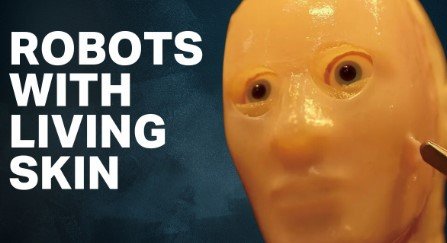Japanese scientists grew human skin cells in the shape of a face to building more life-like robots with expressions like smiling. This is detailed in a new study published in Cell Reports Physical Science and represents a big step forward in the search for more human-like robots.
Researchers from the University of Tokyo grew human skin cells in the form of a face and pulled them into a broad smile using implanted ligament-like connectors. Under the direction of researcher Shoji Takeuchi, the group developed human skin tissue in the form of a face and controlled its expressions with attachments that resembled ligaments. Takeuchi claims that this advancement is the first time that actuators and anchors have been used to successfully control living skin.

Takeuchi and his colleagues have spent the last 10 years investigating the best approach to merging biological and artificial technology. Their efforts resulted in the smiling robot, which was highlighted in research published online last month by Cell Reports Physical Science.
The use of living tissue on robots has various advantages over traditional materials such as metal and plastic. These include the human brain’s muscle-like energy efficiency and the skin’s genetic repair capabilities.
The researchers plan to improve their lab-grown skin by incorporating a circulatory system and neurons. This discovery may pave the way for safer testing grounds in cosmetics and medicine research by utilizing the skin’s absorption capacities.
Despite these developments, difficulties remain, particularly in overcoming the unpleasant impression that some people have toward robots that closely resemble human characteristics but fall short of perfect similarity. Takeuchi admits this issue, saying, “There’s still a bit of that creepiness to it.”
Takeuchi admitted that the robot remained somewhat frightening. “I think that making robots out of the same materials as humans and having them show the same expressions might be one key to overcoming the uncanny valley.“
This discovery not only holds potential for future applications in health and cosmetics, but it also displays Japan’s supremacy in robotics and biotechnology.
You Also Read: Worldwide IT Outage Wreaks Havoc on Businesses, Including Airlines and Banks

